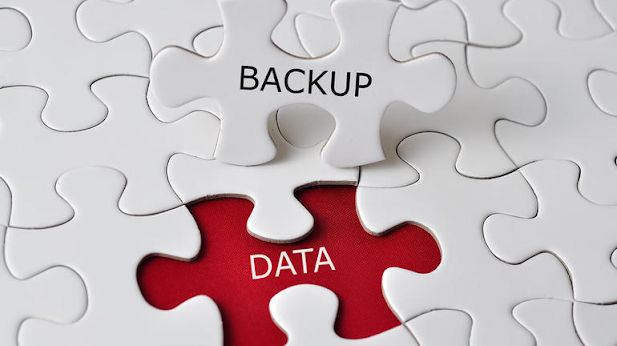Database Security Essentials: A Definitive Handbook for Best Practices
In today’s digital ecosystem, where cyber threats loom large and data breaches are a constant menace, mastering the art and science of database security is no longer optional—it’s a necessity. A database, anchored by a robust DBMS, is the heart of organizational operations, pulsating with valuable information that requires steadfast protection mechanisms against unauthorized access and illicit manipulations.
Understanding the Imperative of Database Security:
A fortified database is the linchpin of organizational security, its sanctity and robustness pivotal to preventing the dire repercussions of security breaches.
The need to protect sensitive information and secure the confidentiality of data is paramount, necessitating a profound understanding and meticulous implementation of key database security principles.
Section I: Essential Database Security Principles:
A. Access Control: A Rigorous Approach:
Access control is unequivocally a cornerstone of secure database management software, orchestrating a meticulously layered defense mechanism against both internal and external threats. It’s not just a foundational protocol; it is the unwavering sentinel safeguarding the sanctity of the database, regulating user interactions with paramount precision.
It’s crucial to reassess your access control strategies, intertwining them with robust security models and physical security measures, to ensure comprehensive protection.
Consider the synergy between access philosophies, security models, and authorization to fortify the database’s portals effectively.
B. Authentication and Authorization: The Dual Guardians:
Authentication and authorization are the symphonic custodians of database security. Their synergy is essential to validate user identities and meticulously define their access realms, operating in harmonious synchronization to ensure the impenetrability of sensitive data realms.
Incorporating multi-factor authentication is crucial in bolstering database security, providing an augmented shield against unauthorized access.
Reflect on the orchestration between your authentication and authorization mechanisms – are they harmonizing to create optimal security synergies?
C. The Lifeline: Secure Data Backups:
Data Backup as a Service is the unsung harbinger of resilience in the expansive sea of digital variables, anchoring essential data through the tumultuous waves of uncertainties. It acts as a clandestine guardian, ensuring data sanctity and instantaneous retrievability in the wake of unforeseen disruptions.
A pivotal question that arises here is the efficiency and responsiveness of your backup services; are they agile and robust enough to swiftly restore normalcy when it’s needed the most?
D. Data Encryption: The Invisible Shield:
Data encryption is a silent vow to secure confidentiality and maintain data integrity as information perpetually traverses the digital corridors.
Implementing potent encryption strategies is imperative to repel unauthorized infiltrations and shield sensitive data from exposures.
Reassess your encryption methodologies and ponder whether they are resilient enough to deter surreptitious access and maintain the secrecy of the data.
E. Continuous Vigilance: Audits and Monitoring:
The integration of proactive and relentless monitoring is crucial in crafting fortified databases, integrating principles of openness and innovative security management protocols to safeguard information amidst the sprawling realms of data structures.
The meticulous infusion of audits ensures that potential vulnerabilities are promptly identified and addressed, reinforcing the seamless integrity of databases.
Examine your monitoring and auditing system’s seamlessness and proactivity; is it effectively poised to detect and address vulnerabilities?
F. Solidifying Application Security:
Application security is pivotal, and its fortification is essential to maintaining seamless integrity within the database ecosystem. It is imperative to stay abreast of evolving landscapes of secure database management, ensuring the proactive application of security patches and updates.
Managed IT Services are the architects of this protective layer, crafting resilient defenses to safeguard the entire data ecosystem with specialized insights and unwavering support.
Regular updates and meticulous application of security patches are pivotal in maintaining the armor’s resilience against the relentlessly evolving cyber threats.
Best Practices for Implementing Key Database Security Principles
A. Embracing Minimal Sensitive Data Storage:
The significance of only storing essential sensitive information is paramount, ensuring optimized data structures and enhanced information security.
This approach is a proactive commitment to minimizing the risks associated with unwarranted data exposures and aligning seamlessly with principles of Storage as a Service, emphasizing the need for secure, efficient, and responsive data management software.
How effectively is your organization consolidating and minimizing the sensitive data footprint?
B. The Non-Negotiables: Regular Software Updates and Patch Management:
In the vast expanse of evolving digital landscapes, maintaining the sanctity of databases is intimately linked with relentless Software Updates and Robust Patch Management. This ensures the continual evolution and fortification of database defenses against the incessantly advancing legion of cyber threats. The alacrity with which updates and patches are implemented is paramount.
Are your software defenses evolving and adapting swiftly to neutralize emerging threats effectively?
C. The Human Element: Employee Training and Awareness:
In the ever-evolving digital terrain, the sanctity of databases is intricately linked with the relentless adaptation and evolution of software defenses.
Reflect on the promptness and effectiveness of your software updates and patch management strategies to ensure they can neutralize emerging threats effectively.
Is the essence of security awareness deeply ingrained within your organizational culture, fostering a proactive security posture among your teams?
D. The Silent Custodian: Secure Data Disposal:
In the realm of data sanctity, the meticulous and secure disposal of obsolete or unnecessary data is a silent custodian.
Secure Data Deletion is not just an action; it’s a commitment to maintaining the seamless integrity of the database environment, eliminating potential vulnerabilities associated with redundant data remnants. Are your data disposal methodologies optimized to ensure the irreversible elimination of obsolete data?
Conclusion: A Symphony of Security Principles and Best Practices:
Database security is a harmonious symphony of principles, practices, and resilient data structures, each echoing an unwavering commitment to safeguarding the sanctity of information.
Reflect on whether your Database Security Solutions and Data Protection Strategies harmonize to create a resilient and impenetrable security fortress, steadfastly safeguarding your organization’s sensitive data realms.
The consideration of Federal Subscription-Based Plans could serve as a robust framework, aligning your organization with unparalleled security standards and compliance requisites, fostering an environment of sustained data integrity and protection.
Source Link: https://shorturl.at/gqJR6



Comments
Post a Comment